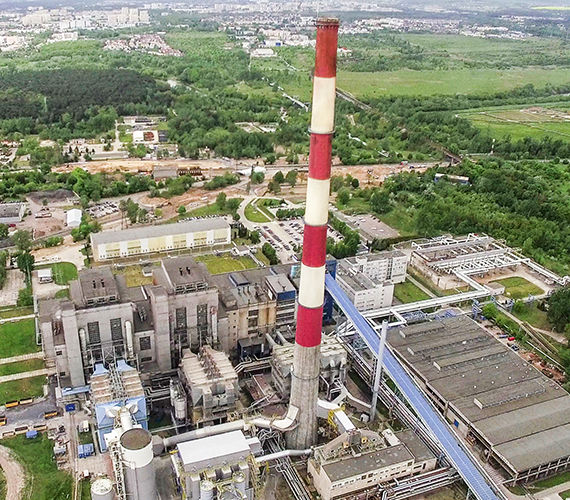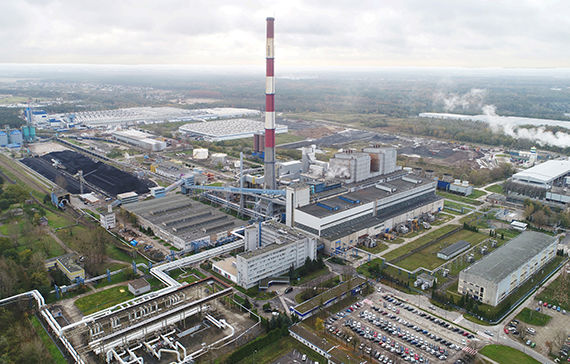Smart forecasting to improve energy management
Jun 22, 2020
With short- and long-term planning capabilities, Veolia's Karolin CHP plant in Poznan, Poland, can create an optimal power and heat generation schedule through the plant, and optimize forward temperature.

In reviewing options for modernizing its district heating operations in Poland, Veolia Energia Polska chose Valmet’s DNA Energy Management System for its Karolin CHP plant in Poznan. Negotiations began in 2015, and the project was successfully implemented in three phases over a two year time period. With short- and long-term planning capabilities, Veolia can now create an optimal power and heat generation schedule through the plant, and optimize forward temperature.
Veolia’s initial goals
Veolia’s target was to achieve an optimal power and heat generation schedule for the entire CHP plant up to three days ahead in a one hour time resolution. They also sought better risk management and performance improvement capabilities to avoid the high cost of power balancing. Another goal was to optimize forward temperatures to generate additional income, because outdoor temperatures in the region can change suddenly, dramatically affecting the heating load.

With an electrical capacity of 250 MWe, the Veolia Karolin plant covers the heat demand of the city of Poznan and delivers power to the national grid.
Short- and long-term planning capabilities
Valmet’s DNA Energy Management System is an Industrial Internet application using modern modular database software for CHP plants. The solution was delivered in cooperation with Valmet’s ecosystem partner, Energy Opticon Ab. The system offers tools for production planning, load and price forecasting, energy production optimization and electricity trading. Control functions and plant data are combined with flexible inputs from external sources like the electricity market and weather services.
The energy management system also includes a load scheduling solution, which enables profitable production with low energy prices or allows an intraday, one-hour market timeframe to switch to a 15-minute imbalance settlement period in the electricity market.
“The solution includes modules for short-term forecasting, production planning and long-term investment planning,” says Pawel Kalbarczyk, Product Manager, Valmet. “We can check investment plans and make forecasts. If something changes, we can see the cost or income impact – one of our solution’s advantages.”
The customer’s energy system was modeled by Valmet to estimate possible heat demands, waste-to-energy unit disturbance, and potential electricity market or reserve power market income streams. Power exchange price forecasts and the price on the balancing and reserve markets were also included in the scope. In addition, all data exchanges were automatized.
Project implementation in three phases
The project was delivered in three phases in 2016. Phase 1, including modules for demand forecasting and shortterm scheduling (up to one week ahead), concluded in September 2017; Phase 2, including a module for longterm optimization, concluded in 2018.

Valmet’s DNA Energy Management System is an Industrial Internet application using modern modular database software for CHP plants. Control functions and plant data are combined with flexible inputs from external sources like the electricity market and weather services.
“Phase 3 included a module for forward temperature optimization called the Smart Optima Heat Network. A feasibility study determined the system’s financial impacts with the module and without it,” Kalbarczyk says. “The forward temperature optimization has a huge potential to bring gains.”
In Phase 3, tools for continuous district heating load forecasting between users and traders were also integrated with the system. This information ensures that as much electricity as possible is produced when the electricity price is attractive, and as little as possible when the price is below the variable cost.
Advanced modeling
Valmet’s DNA Energy Management System includes comprehensive libraries of equipment models. The models allow Veolia to envision start-up, stop or load change costs, and more. Such realistic models are crucial for long-term optimization.
The solution also optimizes linear and non-linear objects, which are more complicated to model. It provides different fuel options for different boilers, and considers both the variable and environmental cost of the fuel.
Fuel savings and additional income

Although the solution has been fully operational for only a year, the results show that the decision to move forward with Valmet’s DNA Energy Management System was worthwhile. Better system modeling and the optimal forward temperature feature have helped the Poznan plant achieve fuel savings, while electricity generation at peak prices has resulted in additional income.
"We look forward to a long relationship with Valmet, further developing the Energy Optima modules to bring new benefits to our company,” says Michal Lesko, Digital Transformation Project Manager at Veolia. “This project has been very successful. The software has met our requirements, and we have been pleased with the calculation results. We’ve also appreciated our productive meetings, as well as Valmet’s fast and accurate remote support.”
“Energy markets are becoming increasingly complex due to the volatility of renewable energy production and new rules in the electricity balancing market. There’s huge potential for similar companies to generate more income with smarter energy forecasting and production planning,” concludes Tiina Stenvik, Director, Performance Solutions at Valmet.
For more information, please contact:
Pawel Kalbarczyk, Product Manager, Valmet
pawel.kalbarczyk(at)valmet.com
Heat genereation schedule and forward temperature can now be optimized
Related articles



